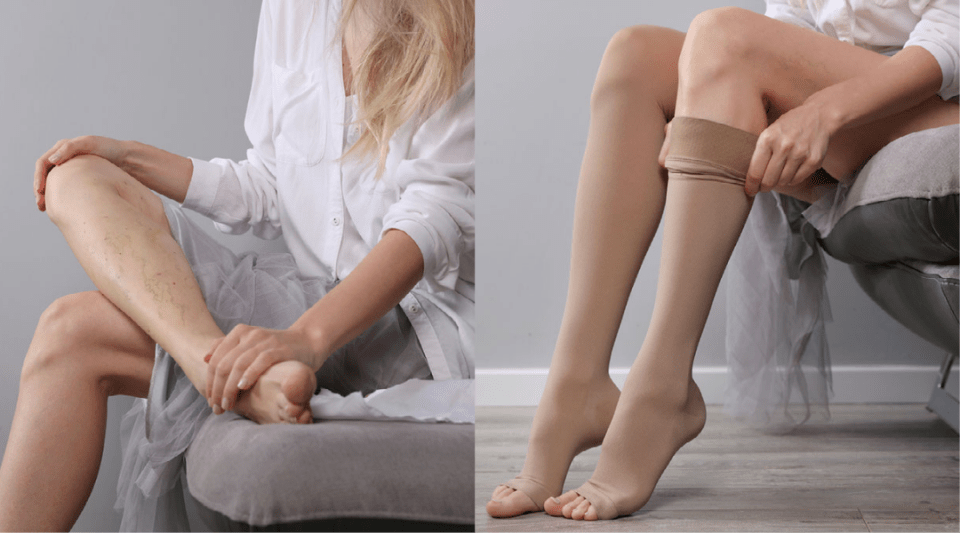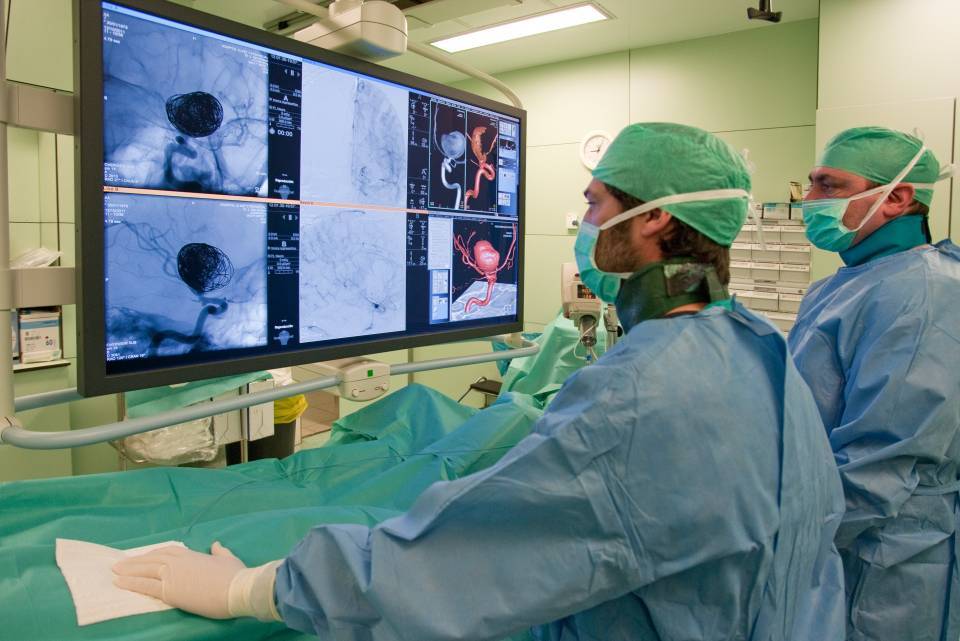- What is it?
- Causes and risk factors
- Symptoms
- Diagnosis
- Treatment
- Evolution of the disease
- Living with the disease
- Research
- Frenquently Asked Questions
Living with the Varicose veins
Varicose veins cannot always be avoided, but some pieces of advice may be followed in order for the disease not to progress:

Keep the skin clean and well hydrated.

Avoid sources of heat. Direct exposure to the sun, heaters, hot baths, thermal baths, saunas, hot wax depilation.

Have cold showers and massage with a jet of water from the feet to the thighs.

Rest with the legs raised (ideally above the level of the heart) for several times during the day and during the night.

Avoid being on your feet for long periods.

Do not wear very tight clothing that makes venous circulation difficult.

Alcohol and tobacco. They have no direct association with the evolution of the varicose disease, although they can have a negative and indirect influence due to their association with overweight and sedentarism.

Diet. A proper and balanced diet is important, rich in proteins, vegetables, fruits, and legumes, and low in fatty meats, processed meats, and pastries.

Weight. It is important to control body weight and avoid obesity and overweight, as they hinder venous circulation.

Exercise. One of the most important measures for varicose veins is to practice sports regularly, especially walking. The moving of the leg muscles helps pump the blood towards the heart and prevents it from accumulating and swelling the veins. At the same time, it improves any discomfort that you may have. Cycling and swimming are also recommended.

Travelling. Be aware of tourist class syndrome, which mainly affects those with a history of significant varicose veins, venous thrombosis, or blood coagulation disorders.
To prevent the appearance of tourist class syndrome
The tourist class syndrome was coined in the late 90s when it was observed that people who traveled for long hours (more than 4 hours) by plane, car or coach were at greater risk of having venous thrombosis. In this sense it is recommended:
- Consult with the doctor before travelling in order to assess the risk and the need to use compression stockings or specific treatment to prevent these disorders.
- Wear comfortable clothes and shoes for travelling, particularly, that they are not tight.
- Walk every one or two hours if possible.
- Drink small amounts of water. Avoid alcoholic drinks, tranquilisers or sleeping pills.
- Perform foot exercises, mainly flexing and extending them, and circular movements with the ankles.
Post-Surgery Recommendations
Skin condition
- Monitor the surgical wound area (with or without dressing) and ensure it remains clean and dry.
- Care for the wound following the instructions provided by your doctor or nurse.
- Wash your hands with soap and water before performing wound care.
- Watch for signs of infection at the wound site (pain, warmth, redness, etc.).
- Monitor any bruising. The appearance of bruises, especially on the inner side of the leg, is common after varicose vein surgery, but they should still be observed.
- Numbness or lack of sensation near the surgical wounds during the first few weeks is normal.
- If you have stitches, you will be informed when and where they should be removed.
Diet
- Increase fiber intake and drink plenty of fluids to avoid constipation.
- Start eating once you arrive home, following the discharge instructions.
- Resume your usual eating habits, following healthy lifestyle recommendations.
Personal hygiene
-
Maintain your normal hygiene routine, making sure to dry the wound area well.
General measures
- Perform body movements that reduce physical strain.
- Keep the leg elevated and supported on a soft but firm surface, like a cushion or pillow.
- Return to normal activities as soon as possible.
- Take prescribed medications (pain relievers, anti-inflammatories, etc.) as directed by your doctor.
- Walk daily according to medical advice.
Avoid
- Any activity that increases pain.
- Sudden or violent movements.
- Prolonged periods of sitting or standing.
- Crossing your legs when sitting.
- Running and jumping, as these can increase venous pressure in the legs due to repetitive impact on the ground.
You should go to your primary care center or an emergency service if you experience:
- Persistent fever over 38°C (100.4°F) with chills, or fever that does not go down after taking paracetamol.
- Intense pain that does not improve with prescribed medication.
- Heavy or persistent bleeding that does not stop after 10 minutes of compression. In case of active bleeding, press the wound, elevate the operated limb, and go to the emergency room.
- Significant swelling or a large lump near the surgical wounds or on the inner thigh.
- Loss of sensation in the operated limb.
- Changes in the wound: inflammation, redness, warmth, or discharge of purulent fluid (yellow or green).
Substantiated information by:


Published: 19 June 2018
Updated: 20 May 2025
Subscribe
Receive the latest updates related to this content.
Thank you for subscribing!
If this is the first time you subscribe you will receive a confirmation email, check your inbox


